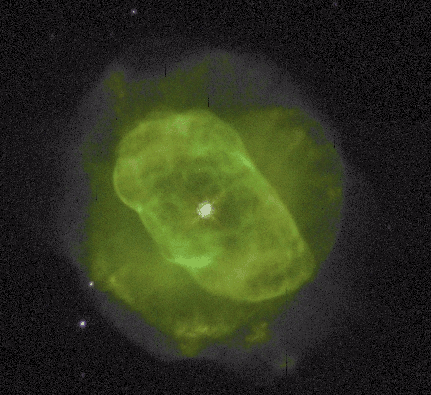Credit & Copyright: H. Bond,
HST, STSci,
NASA
Explanation:
Will most stars one day look like this? Pictured above is the
planetary nebula
NGC 5882,
captured by the
Hubble Space Telescope.
Although
planetary
nebulae can appear similar to planets like
Uranus and
Neptune, they
are actually
gas
clouds surrounding stars typically hundreds of light years
away.
Planetary
nebula form when a typical
star completes
fusion in its
core and ejects an outer envelope of gas - usually about 10 percent of the
star's initial mass. This gas shell dims in about 50,000 years -
short compared to the lifetimes of stars.
Therefore, although only about 1000
planetary nebula are known in our
Galaxy, it is thought that most stars go
through this phase. Green light is emitted when
oxygen ions acquire
electrons from the surrounding gas.
1999 2000 2001 2002 2003 2004 2005 2006 2007 2008 2009 2010 2011 2012 2013 2014 2015 2016 2017 2018 2019 2020 2021 2022 2023 2024 2025 |
Январь Февраль Март Апрель Май Июнь Июль Август Сентябрь Октябрь Ноябрь Декабрь |
NASA Web Site Statements, Warnings, and Disclaimers
NASA Official: Jay Norris. Specific rights apply.
A service of: LHEA at NASA / GSFC
& Michigan Tech. U.
|
Публикации с ключевыми словами:
Планетарная туманность - Эволюция звезд
Публикации со словами: Планетарная туманность - Эволюция звезд | |
См. также:
Все публикации на ту же тему >> | |
